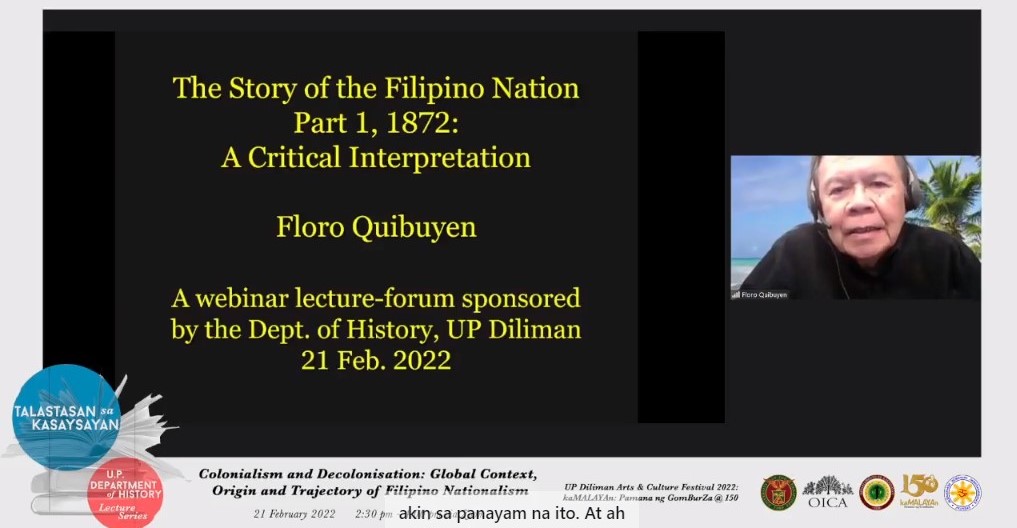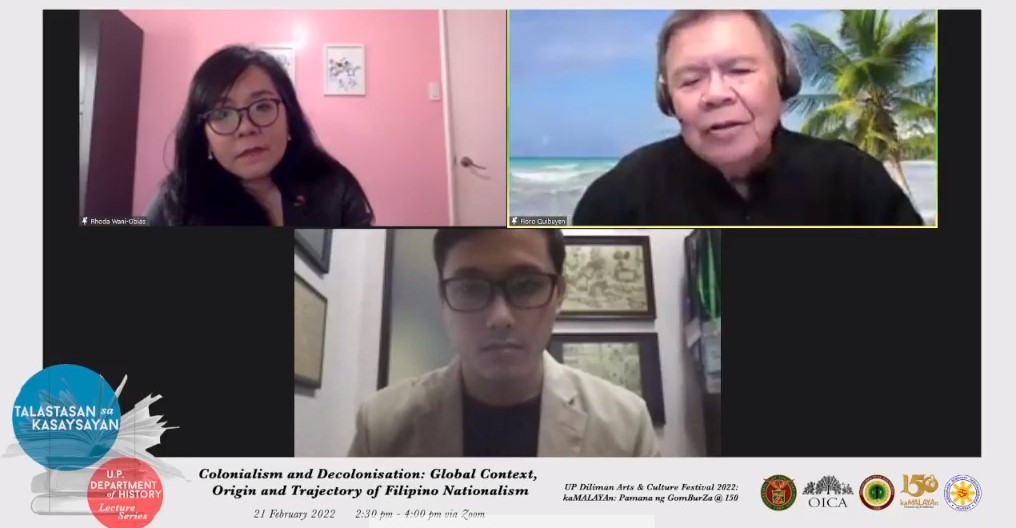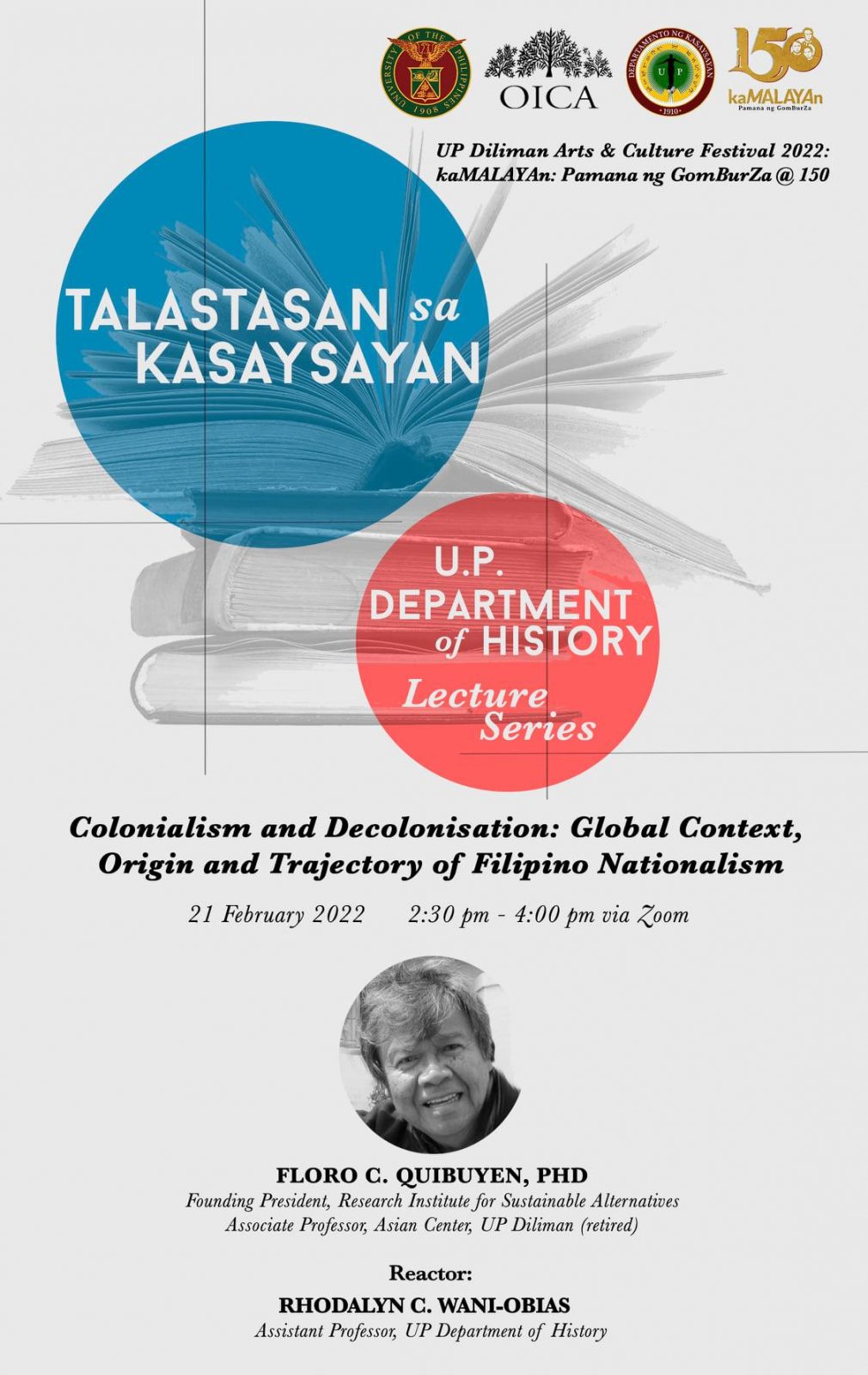“More than looking for our identity, we should aspire to an efficient justice system and genuine land reform,” said retired Prof. Floro C. Quibuyen, PhD of the Asian Center.
Quibuyen was the first speaker of the four-part weekly webinar, Talatastasan sa Kasaysayan, part of the UP Diliman Arts and Culture Festival 2022 with the theme, “kaMALAYAn: Pamana ng GomBurZa @ 150.”
His lecture, “The Story of Filipino Nation, Part 1, 1872: A Critical Interpretation,” was held via Zoom on Feb. 21 and livestreamed on the Facebook pages of the UP Department of History and the UP Diliman Office for Initiatives in Culture and the Arts.

Quibuyen shared the European imperialist history leading to the Philippines’ colonization by Spain, how the 1872 Cavite mutiny led to the Philippine revolution, and the relevance of the 1872 struggles to the nation’s present state.
He said the crisis created by European imperialism in the 16th century resulted in “violent conquest of nations and the destruction of indigenous culture.”
“The colonized country became impoverished and underdeveloped, while the colonizers became enriched and developed as they transferred the ‘capital’ to themselves,” Quibuyen said.

In 1864, Fr. Jose Burgos issued a manifesto, “A La Nacion” (To the Nation), to protest the injustices and land acquisition of the Spanish friars.
Part of the manifesto stated, “We know that, far from the nation being sustained by the friars, it is they who are sustained by the material force of the nation. Hence, no other consideration should be given them than that of Spanish secular priests… [They should not enjoy] those exceptions and those privileges under whose protection they allow themselves to commit the greatest abuses and scandals.”
On Feb. 17, 1872, the Spanish authorities declared Mariano Gomez, Burgos, and Jacinto Zamora, collectively called GomBurZa, guilty of instigating the Jan. 20, 1872 Cavite Mutiny and they were sentenced to die by garrote. Their execution, witnessed by thousands of Filipinos, sparked a series of unrest resulting in the 1896 Philippine revolution.
Quibuyen said the struggle “starts with Burgos in Manila, then moves to Madrid with Marcelo H. del Pilar, then Jose Rizal takes it back to Manila, where it is picked up by Andres Bonifacio.”
In closing, Quibuyen said, “We are still looking for real justice that will benefit the people, and a genuine land reform where land is distributed to rightful owners.”
Quibuyen holds a Ph.D. in political science and master’s in anthropology from the University of Hawaii at Manoa, a BA philosophy degree from UPD, and a diploma in community services work from the BCA National Training Group in Sydney. He taught undergraduate and graduate courses at UPD, University of Santo Tomas, and the University of Hawaii at Manoa. Upon retiring from the Asian Center, Quibuyen founded the Sydney-based Research Institute for Sustainable Alternatives (RISAL). The Talastasan sa Kasaysayan webinar series is organized by the UP Department of History, in partnership with the National Historical Commission of the Philippines.

